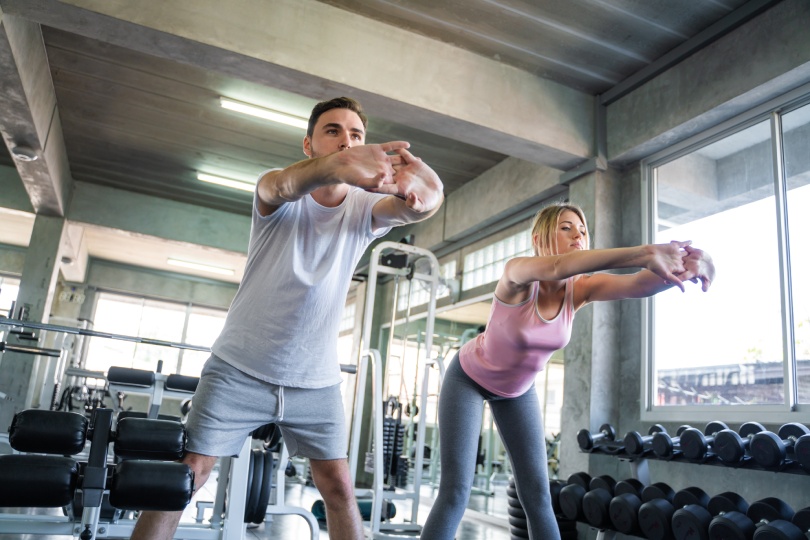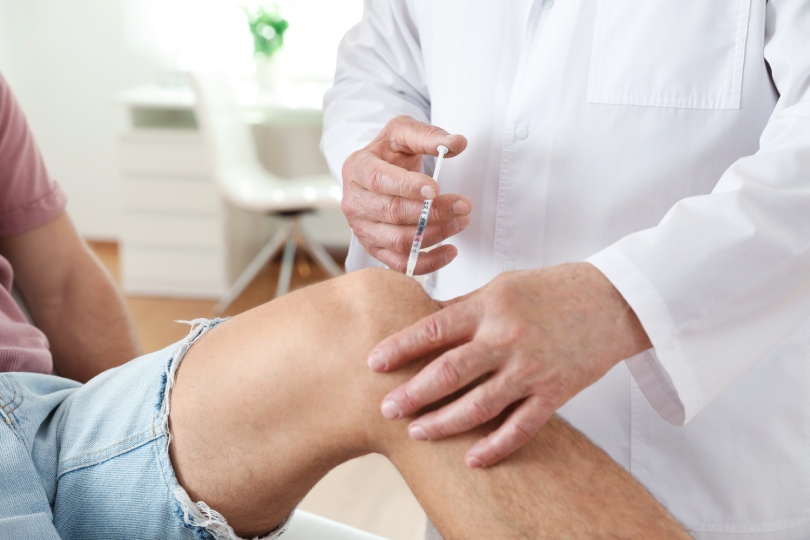Spring Into Action: Joint Pain Relief Guide
As the days grow longer with spring setting in, many of us feel inspired to embrace a more active lifestyle. But for those dealing with joint pain, the idea of spring activities like gardening, hiking, or simply enjoying the outdoors can feel daunting. The bad news is that warmer weather can lead to worsening joint pain. The good news? With the right approach, you can manage joint discomfort and make the most of this vibrant season.
In this guide, we’ll explore practical tips to alleviate joint pain, prevent further strain, and regain the freedom to move with ease. Let’s take the first step toward healthier, happier joints this season.
A Closer Look at Joint Pain
Joint pain is a common issue that can affect people of all ages, limiting mobility and diminishing quality of life. Understanding its root causes, how seasonal changes impact joint health, and recognizing key symptoms can help you take proactive steps toward relief.
Common Causes of Joint Pain

-
Arthritis:
Osteoarthritis: Caused by wear and tear of cartilage, leading to pain, stiffness, and reduced range of motion.
Rheumatoid Arthritis: An autoimmune condition causing inflammation, swelling, and joint deformity.
-
Injuries:
Acute injuries like sprains, strains, or fractures can lead to joint pain, even long after they heal.
Repeated stress or improper posture can cause overuse injuries, often affecting knees, shoulders, or wrists.
-
Overuse and Strain:
High-impact or repetitive activities can wear down the cartilage or irritate tendons and ligaments, causing pain and inflammation.
The Impact of Seasonal Changes on Joint Health
Spring’s warmer weather can be a welcome change, but for some, seasonal transitions bring challenges:
- Temperature and Humidity Shifts: Fluctuations in barometric pressure can increase joint stiffness, particularly in those with arthritis.
- Increased Activity Levels: Many people become more active in spring, potentially overexerting their joints after months of relative inactivity.
- Allergies and Inflammation: Seasonal allergies can increase systemic inflammation, indirectly worsening joint pain.
Signs and Symptoms to Watch For
Recognizing the early signs of joint problems can help you address them before they worsen. Keep an eye out for:
- Persistent or recurring pain in the joints.
- Swelling, redness, or warmth around the affected area.
- Stiffness, particularly after waking up or long periods of inactivity.
- Limited range of motion or difficulty performing daily tasks.
- A grinding or popping sensation during movement, which may indicate cartilage damage.
Spring Activities That Can Aggravate Joint Pain

Spring’s warmer temperatures and longer days inspire us to head outdoors and embrace activities that have been on hold through the colder months. However, many popular springtime pursuits can inadvertently strain your joints if you do not take proper precautions. Here is a closer look at these activities and how they might impact your joint health.
1. Gardening
Tending to your garden is a quintessential spring activity, but it can involve repetitive motions and prolonged periods of kneeling, bending, or squatting. These actions place stress on your knees, hips, and lower back, potentially leading to inflammation or discomfort. Additionally, lifting heavy pots or tools without using the proper technique can strain your wrists, shoulders, and elbows.
2. Hiking and Walking
Exploring scenic trails is a great way to enjoy spring, but uneven terrain and prolonged walking can put pressure on your knees, ankles, and hips. This is especially true for individuals with existing joint conditions or those carrying extra weight.
3. Spring Sports
Sports like tennis, golf, and cycling are popular in the spring but often involve repetitive movements or high-impact actions that can irritate your joints. For example, tennis requires sudden pivots and quick movements, which can stress your knees and ankles, while golf can strain your back and shoulders due to twisting motions.
Joint Pain Relief Strategies

Managing joint pain effectively requires a combination of proactive habits and targeted remedies. Below are actionable strategies to help alleviate discomfort, improve mobility, and protect your joints while staying active this spring.
Stretching and Strengthening Exercises
- Gentle Stretches: Incorporate stretches like hamstring stretches, shoulder rolls, and cat-cow yoga poses to enhance flexibility.
- Low-Impact Strength Training: Focus on exercises like squats, lunges, or resistance band routines to build muscle support around the joints.
- Range of Motion Exercises: Perform joint-specific exercises, such as ankle circles or wrist rotations, to maintain mobility.
Anti-Inflammatory Diet
- Leafy Greens: Spinach, kale, and arugula are rich in antioxidants and reduce inflammation.
- Fatty Fish: Salmon, mackerel, and sardines provide omega-3 fatty acids, which are known for their anti-inflammatory properties.
- Turmeric: This spice contains curcumin, a powerful anti-inflammatory compound.
- Berries and Nuts: Blueberries, almonds, and walnuts are packed with antioxidants and healthy fats.
Over-the-Counter Remedies and Topical Solutions
- Pain-Relieving Creams and Gels: Products containing menthol, capsaicin, or salicylates (e.g., Biofreeze or Voltaren) provide localized relief.
- Non-Steroidal Anti-Inflammatory Drugs (NSAIDs): Medications like ibuprofen (Advil) or naproxen (Aleve) help reduce inflammation and alleviate pain.
- Supplements: Glucosamine and chondroitin may support joint health over time.
Professional Treatments
- Physical Therapy:
Tailored exercise plans to improve strength, flexibility, and joint function. Physical therapists can also guide safe movement patterns to prevent further damage.
- Chiropractic Care:
Adjustments to improve alignment and relieve joint stress, particularly in the spine, hips, and shoulders.
- Acupuncture:
This ancient practice stimulates specific points to reduce pain and inflammation, offering an alternative to medication.
How Interventional Pain Management Can Help

Interventional pain management is a specialized approach designed to address chronic joint pain by targeting its root causes, rather than simply masking symptoms. By using minimally invasive techniques and advanced therapies, it offers long-lasting relief, improved mobility, and a better quality of life for those struggling with persistent joint discomfort.
Here are some of the interventional pain management treatments targeted at relieving joint pain:
1. Epidural Steroid Injections
Targeted injections that deliver anti-inflammatory medication to the spine or joints, reducing pain and swelling caused by conditions like arthritis or nerve compression.
2. Nerve Blocks
Nerve blocks interrupt pain signals to provide immediate and often long-lasting relief. These are ideal for chronic pain that hasn’t responded to other treatments.
3. Joint Injections
Specialized injections deliver medication directly into the affected joint to alleviate pain, reduce inflammation, and improve movement, particularly for conditions like osteoarthritis.
4. Radiofrequency Ablation
This advanced technique uses heat to disrupt pain signals from targeted nerves, offering relief that can last several months or more.
Spring Into a Pain-Free Life with Altus
We understand how joint pain can limit your life – and we’re here to help. With advanced, minimally invasive treatments and a patient-centered approach, we will create a plan to get you back to feeling your best.
Schedule your consultation and let this spring be the season you say goodbye to pain and hello to a healthier, happier you.





